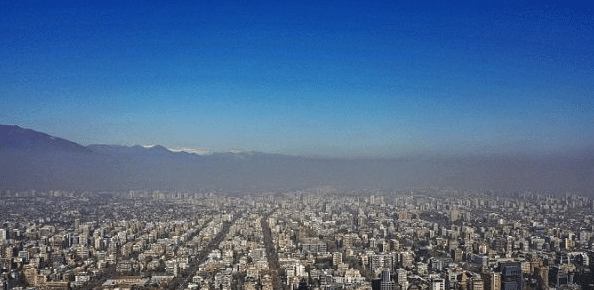As the Northern Hemisphere recorded the hottest July, countries in the Southern Hemisphere have also experienced unprecedented heat at the beginning of August, the middle of winter, with temperatures in many places up to record high.
The temperature in the Chilean capital Santiago stood at 24 degrees Celsius on Aug. 2 and hit 37 degrees Celsius in the town of Vicuna in central Chile on Aug. 1. Chile’s national weather agency said several weather stations across the country recorded temperatures over 35 degrees Celsius at the start of August.
Data from Argentina’s National Meteorological Service showed that in Buenos Aires, the temperature exceeded 30 degrees Celsius on Aug. 1, marking the highest one of Aug. 1 in 117 years. The city’s average August temperature is usually between 9 and 18 degrees Celsius.
According to data from the European Centre for Medium Range Weather Forecasts, the current temperature is between 10 and 20 degrees Celsius above what is normal for this time of year in parts of Chile and Argentina.
We are royally screwed. Mid winter now in southern hemisphere. These are the heat maps pic.twitter.com/9mbsSh4flP
— Emran Rashid (@EmranRashid3) August 3, 2023
Maximiliano Herrera, a climatologist and weather historian, pointed out that South America is living one of the extremest events the world has ever seen.
“Unbelievable temperatures up to 38.9C in the Chilean Andine areas in mid winter! Much more than what Southern Europe just had in mid summer at the same elevation: This event is rewriting all climatic books,” he said.
Meanwhile, in Australia, unseasonable warmth has been lasting for several weeks. “A lack of cold fronts since late July has allowed temperatures to climb up to 10 above average for eight consecutive days,” an ABC report said, adding that “the whole of Australia, apart from the WA west coast, was warmer than normal” on Aug. 2.
On Aug. 3, the most unusual heat was observed over the southeast states and the capital cities were bathed in sunshine and the warmest maximums in the middle half of winter in more than a decade, the report said.
The temperature in Melbourne hit 19.8 degrees Celsius, the warmest in mid-winter for 10 years. Hobart recorded the warmest temperature in mid-winter for 20 years at 19.6 degrees Celsius and Adelaide witnessed 24.7 degrees Celsius, the warmest in mid-winter for 48 years.
The parched shoreline and shrinking depths of Lake Titicaca are prompting growing alarm that an ago-old way of life around South America's largest lake is slipping away as a brutal heat wave wreaks havoc on the southern hemisphere's winter. https://t.co/YlU1DnKFGC
— Reuters Science News (@ReutersScience) August 4, 2023
The scorching winter in the Southern Hemisphere would delay the traditional ski season in Australia. August is peak season when snow depth typically reaches a maximum, but mild weather and rain have eroded the cover during the past few weeks.
At an elevation of 1,620 meters, data showed that a natural snow depth was only 16.5 centimeters, well below the early August average of about 70 centimeters.
“Warm winters in Australia can negatively affect some parts of the economy, including the ski industry. It also disrupts flora and fauna and increases the chance of ‘flash droughts’—where drier-than-normal conditions turn into severe drought in the space of weeks,” said Andrew King, a senior lecturer in climate science at the University of Melbourne.
“The warm, dry conditions may also lead to an earlier start to the fire season in Australia’s south-east,” he added.
Martin Jacques, a professor at Chile’s University of Concepcion, explained that while some of the temperature increase is expected during this time of the year due to atmospheric circulation, these extreme temperatures have been exacerbated by El Nino.
“What now seems very extreme could gradually become more and more normal in a few years,” Jacques was quoted as saying.
Originally built on islands and low lying mangrove swamps, Recife is the World's 16th most vulnerable city to climate change according to the IPCC. One effect of this process is that floods are more frequent and more violent. My story for @telesurenglish pic.twitter.com/S28LusLscF
— BrianMier (@BrianMteleSUR) July 16, 2023

